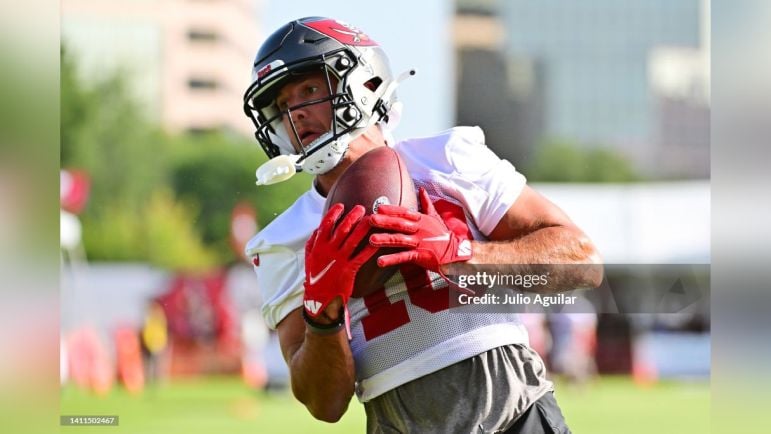After months of speculation, the Pittsburgh Steelers finally landed their explosive, playmaking wide receiver. Ok, it’s just Scotty Miller. Not exactly fitting anyone’s definition of the big move that’s driven the rumor mill since Diontae Johnson was dealt to the Carolina Panthers.
It’s doubtful the Steelers think Miller is *the* answer. But he follows a familiar theme of the offseason at the position. The Steelers have been stocking up on low-tier wide receivers, adding plenty of able bodies but not top-end talent. And with each move, it’s harder to understand the team’s plan.
Quez Watkins, Van Jefferson, and now Miller have been added in free agency since Johnson was shipped out of town. They’re not identical receivers. Watkins a little taller and lankier with legit home run speed, Jefferson bulkier with versatility and can block a bit. And Miller is shorter, a more traditional slot-receiver type in profile though he’s played inside and out. But none of them move the needle and you can throw Calvin Austin III into that mix. All four are rowing the same boat without much separation in talent or production. None of these guys should be your No. 2 starter tasked to play hundreds of snaps and make game-to-game impact.
None of these additions prevent the Steelers from making a “splash” move. One could be coming, though figuring out when and for whom is anyone’s guess. Perhaps these additions hedge against the reality that Pittsburgh might not be able to trade for a top-flight name, a DK Metcalf or Courtland Sutton. The Steelers could have every desire in the world but if the other side doesn’t want to dance, a deal won’t go down.
Even with the names added, none seem to have a clear role. Pittsburgh looked at every height/weight/physical receiver in the draft. Then they took Roman Wilson, a good player but someone who doesn’t fit that role. Now they are adding Miller, who definitely won’t be that guy. Beyond George Pickens and Wilson, the receiver room is a motley crew of vets. And not all of them will make the 53-man roster.
Pittsburgh’s backup plan might be throwing everything at the wall and seeing what sticks. It helps that Jefferson and Miller have experience in Smith’s offense, giving them a head start on joining a new team. Adding this collection of wideouts aren’t egregious signings. They’re low-risk, almost zero-cost, and if shown the door come late August, they’ll be footnotes from an offseason headlined by Russell Wilson, Justin Fields, and Patrick Queen. But considering the pool of free agent receivers who were available, names like DJ Chark, Odell Beckham Jr., Michael Gallup, and even Zay Jones (visiting several teams, the Steelers so far not on his list) it’s odd Pittsburgh is scraping the bottom of the barrel with names that are rungs below. Maybe Omar Khan is confident he can land a big fish and it’s easier to deal with cutting Miller or Jefferson than it is to sign a Chark to a more middle-tier deal.
But at some point, this team is going to have to do more than it has. You can’t just sign a bunch of journeymen to one-year deals and expect your passing game to thrive. That was the issue with the Johnson deal, trading a talented receiver and making that position group so obviously worse. If Pittsburgh was able to replace him with a big swing of the bat, a Brandon Aiyuk, that deal wouldn’t sting as badly. So far, they haven’t, and their odds of doing so in the future are looking worse.
So what’s their plan? That’s the question. Is Roman Wilson going to play more on the outside than he did his final two years at Michigan? And in Smith’s tight end-heavy offense, will the team not really care about having a strong No. 3 slot receiver? Are these names pure depth to buy time for adding a clear-cut starter? Is Pittsburgh looking to create as much competition on the bottom of the roster as possible in the hopes someone gets pushed to the top? The more receivers the Steelers add, the more questions they create.








